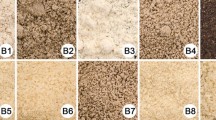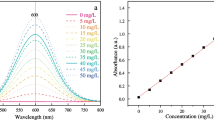Abstract
Microporous biochars, mainly composed by hydroxyapatite (HAp), were prepared from animal waste bones. In this study, a three-step procedure including pre-pyrolysis, chemical treatment with NaOH, KOH and K2CO3, and pyrolysis was investigated. The effects of the activation agent and its concentration were analysed by N2 adsorption–desorption, SEM, EDX, FTIR, and XRD techniques. The activation mechanism was investigated by TG-MS. FTIR and XRD data confirm that the obtained biochars were mainly composed of HAp. K2CO3 was the most effective with porosity being increased by 30 % (up to 234 m2/g) compared to non-alkali-treated sample. New pores were generated mainly in the microporous range. Analysis of the pyrolysis gases by MS revealed that the main effect of the alkali treatment is the incorporation of OH− ions, which then react with bone matrix to generate porosity. Other gas-phase reactions, such as reverse WGS and methanation reactions, promoted by K2CO3, may be involved in the activation process. In contrast, KOH caused little modification of the HAp structure. Statistical analysis supported the relationship among the release of certain compounds during pyrolysis and the textural properties of the final material.







Similar content being viewed by others
References
Yan Y, Dong X, Sun X et al (2014) Conversion of waste FGD gypsum into hydroxyapatite for removal of Pb2+ and Cd2+ from wastewater. J Colloid Interface Sci 429:68–76
Goodman PA, Li H, Gao Y et al (2013) Preparation and characterization of high surface area, high porosity carbon monoliths from pyrolyzed bovine bone and their performance as supercapacitor electrodes. Carbon 55:291–298
Kim Y, Lee YJ (2014) Characterization of mercury sorption on hydroxylapatite: batch studies and microscopic evidence for adsorption. J Colloid Interface Sci 430:193–199
Banat F, Al-Asheh S, Mohai F (2000) Batch zinc removal from aqueous solution using dried animal bones. Sep Purif Technol 21:155–164
Rezaee A, Rangkooy H, Jonidi-Jafari A et al (2013) Surface modification of bone char for removal of formaldehyde from air. Appl Surf Sci 286:235–239
Chakraborty R, RoyChowdhury D (2013) Fish bone derived natural hydroxyapatite-supported copper acid catalyst: Taguchi optimization of semibatch oleic acid esterification. Chem Eng J 215–216:491–499
Perego C, Millini R (2013) Porous materials in catalysis: challenges for mesoporous materials. Chem Soc Rev 42:3956–3976
Cheung CW, Chan CK, Porter JF et al (2001) Combined diffusion model for the sorption of cadmium, copper, and zinc ions onto bone char. Environ Sci Technol 35:1511–1522
Doostmohammadi A, Monshi A, Salehi R et al (2012) Preparation, chemistry and physical properties of bone-derived hydroxyapatite particles having a negative zeta potential. Mater Chem Phys 132:446–452
Sobczak A, Kowalski Z, Wzorek Z (2009) Preparation of hydroxyapatite from animal bones. Acta Bioeng Biomech 11:23–28
Hassan SSM, Awwad NS, Aboterika AHA (2008) Removal of mercury(II) from wastewater using camel bone charcoal. J Hazard Mater 154:992–997
Murillo YS, Giraldo L, Moreno JC (2011) Porous materials obtained from chicken and pork bones for the adsorption of 2,4-dinitrophenol. Afinidad 68:447–452
Rezaee A, Ghanizadeh G, Behzadiyannejad G et al (2009) Adsorption of endotoxin from aqueous solution using bone char. Bull Environ Contam Toxicol 82:732–737
Moreno-Pirajan JC, Gomez-Cruz R, Garcia-Cuello VS et al (2010) Binary system Cu(II)/Pb(II) adsorption on activated carbon obtained by pyrolysis of cow bone study. J Anal Appl Pyrolysis 89:122–128
Rojas-Mayorga CK, Silvestre-Albero J, Aguayo-Villarreal IA et al (2015) A new synthesis route for bone chars using CO2 atmosphere and their application as fluoride adsorbents. Microporous Mesoporous Mater 209:38–44
Lillo-Ródenas MA, Cazorla-Amorós D, Linares-Solano A (2003) Understanding chemical reactions between carbons and NaOH and KOH: an insight into the chemical activation mechanism. Carbon 41:267–275
Phan NH, Rio S, Faur C et al (2006) Production of fibrous activated carbons from natural cellulose (jute, coconut) fibers for water treatment applications. Carbon 44:2569–2577
Dimovic S, Smiciklas I, Plecas I et al (2009) Comparative study of differently treated animal bones for CO2+ removal. J Hazard Mater 164:279–287
Brzezińska-Miecznik J, Haberko K, Sitarz M et al (2015) Hydroxyapatite from animal bones—extraction and properties. Ceram Int 41:4841–4846
Iriarte-Velasco U, Ayastuy JL, Zudaire L et al (2014) An insight into the reactions occurring during the chemical activation of bone char. Chem Eng J 251:217–227
Šljivić-Ivanović M, Smičiklas I, Milenković A et al (2015) Evaluation of the effects of treatment factors on the properties of bio-apatite materials. J Mater Sci 50:354–365. doi:10.1007/s10853-014-8594-4
Gunawardane RP, Annersten H (1987) Fertilizer from Eppawela apatite: conversion using alkali hydroxide and quartz. J Natl Sci Counc Sri Lanka 15:117–132
Babic BM, Milonjic SK, Polovina MJ et al (1999) Point of zero charge and intrinsic equilibrium constants of activated carbon cloth. Carbon 37:477–481
Iriarte-Velasco U, Sierra I, Cepeda EA et al (2015) Methylene blue adsorption by chemically activated waste pork bones. Color Technol 131:322–332
Wei S, Zhang H, Huang Y et al (2011) Pig bone derived hierarchical porous carbon and its enhanced cycling performance of lithium–sulfur batteries. Energy Environ Sci 4:736–740
Hassenkam T, Fantner GE, Cutroni JA et al (2004) High-resolution AFM imaging of intact and fractured trabecular bone. Bone 35:4–10
Landi E, Tampieri A, Celotti G et al (2000) Densification behaviour and mechanisms of synthetic hydroxyapatites. J Eur Ceram Soc 20:2377–2387
Reyes-Gasga J, Martínez-Piñeiro EL, Rodríguez-Álvarez G et al (2013) XRD and FTIR crystallinity indices in sound human tooth enamel and synthetic hydroxyapatite. Mater Sci Eng 33:4568–4574
Ślósarczyk A, Paszkiewicz Z, Paluszkiewicz C (2005) FTIR and XRD evaluation of carbonated hydroxyapatite powders synthesized by wet methods. J Mol Struct 744–747:657–661
Merry JC, Gibson IR, Best SM et al (1998) Synthesis and characterization of carbonate hydroxyapatite. J Mater Sci Mater Med 9:779–783. doi:10.1023/A:1008975507498
Figueiredo MM, Gamelas JAF, Martins AG (2012) Characterization of Bone and Bone-Based Graft Materials Using FTIR Spectroscopy. In: Theophanides T (ed) Infrared spectroscopy-life and biomedical sciences. Intech, Open Science, Rijeka
Puziy AM, Poddubnaya OI, Martínez-Alonso A et al (2002) Synthetic carbons activated with phosphoric acid: I. Surface chemistry and ion binding properties. Carbon 40:1493–1505
Shen Z, Xue R (2003) Preparation of activated mesocarbon microbeads with high mesopore content. Fuel Process Technol 84:95–103
Deng H, Li G, Yang H et al (2010) Preparation of activated carbons from cotton stalk by microwave assisted KOH and K2CO3 activation. Chem Eng J 163:373–381
Etok S, Valsami-Jones E, Wess T et al (2007) Structural and chemical changes of thermally treated bone apatite. J Mater Sci 42:9807–9816. doi:10.1007/s10853-007-1993-z
Yala S, Khireddine H, Sidane D et al (2013) Surface modification of natural and synthetic hydroxyapatites powders by grafting polypyrrole. J Mater Sci 48:7215–7223. doi:10.1007/s10853-013-7538-8
Tanaka H, Watanabe T, Chikazawa M (1997) FTIR and TPD studies on the adsorption of pyridine, n-butylamineand acetic acid on calcium hydroxyapatite. J Chem Soc Faraday Trans 93:4377–4381
Prabowo B, Umeki K, Yan M et al (2014) CO2–steam mixture for direct and indirect gasification of rice straw in a downdraft gasifier: Laboratory-scale experiments and performance prediction. Appl Energy 113:670–679
Chen C, Cheng W, Lin S (2003) Study of reverse water gas shift reaction by TPD, TPR and CO2 hydrogenation over potassium-promoted Cu/SiO2 catalyst. Appl Catal A 238:55–67
Yasukawa A, Kandori K, Ishikawa T (2003) TPD-TG-MS study of carbonate calcium hydroxyapatite particles. Calcif Tissue Int 72:243–250
Purevsuren B, Avid B, Narangerel J et al (2004) Investigation on the pyrolysis products from animal bone. J Mater Sci 39:737–740. doi:10.1023/B:JMSC.0000011545.51724.ad
Bansode A, Tidona B, von Rohr PR et al (2013) Impact of K and Ba promoters on CO2 hydrogenation over Cu/Al2O3 catalysts at high pressure. Catal Sci Technol 3:767–778
Zong N, Liu Y (2012) Learning about the mechanism of carbon gasification by CO2 from DSC and TG data. Thermochim Acta 527:22–26
Soni CG, Wang Z, Dalai AK et al (2009) Hydrogen production via gasification of meat and bone meal in two-stage fixed bed reactor system. Fuel 88:920–925
Acharya CK, Jiang F, Liao C et al (2013) Tar and CO2 removal from simulated producer gas with activated carbon and charcoal. Fuel Process Technol 106:201–208
Mckee DW (1983) Mechanisms of the alkali-metal catalyzed gasification of carbon. Fuel 62:170–175
Lillo-Ródenas MA, Juan-Juan J, Cazorla-Amorós D et al (2004) About reactions occurring during chemical activation with hydroxides. Carbon 42:1371–1375
Robau-Sánchez A, Aguilar-Elguézabal A, Aguilar-Pliego J (2005) Chemical activation of Quercus agrifolia char using KOH: evidence of cyanide presence. Microporous Mesoporous Mater 85:331–339
Mao Z, Yang X, Zhu S et al (2015) Effect of Na+ and NaOH concentrations on the surface morphology and dissolution behavior of hydroxyapatite. Ceram Int 41:3461–3468
Acknowledgements
The authors wish to thank the Basque Government (UFI 11/39 (UPV/EHU) and S-PE13UN100 (SAI13/254)) for their financial support.
Author information
Authors and Affiliations
Corresponding author
Electronic supplementary material
Below is the link to the electronic supplementary material.
Rights and permissions
About this article
Cite this article
Iriarte-Velasco, U., Sierra, I., Zudaire, L. et al. Conversion of waste animal bones into porous hydroxyapatite by alkaline treatment: effect of the impregnation ratio and investigation of the activation mechanism. J Mater Sci 50, 7568–7582 (2015). https://doi.org/10.1007/s10853-015-9312-6
Received:
Accepted:
Published:
Issue Date:
DOI: https://doi.org/10.1007/s10853-015-9312-6




